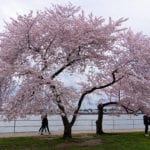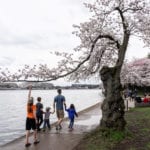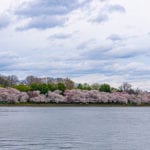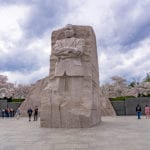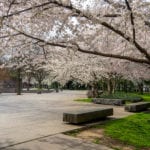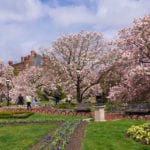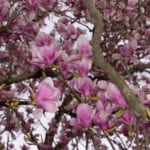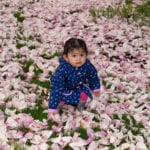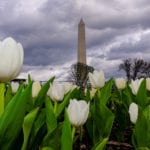Cherry Blossoms Peak Early at Tidal Basin (photos)
By • March 29, 2021 0 1345
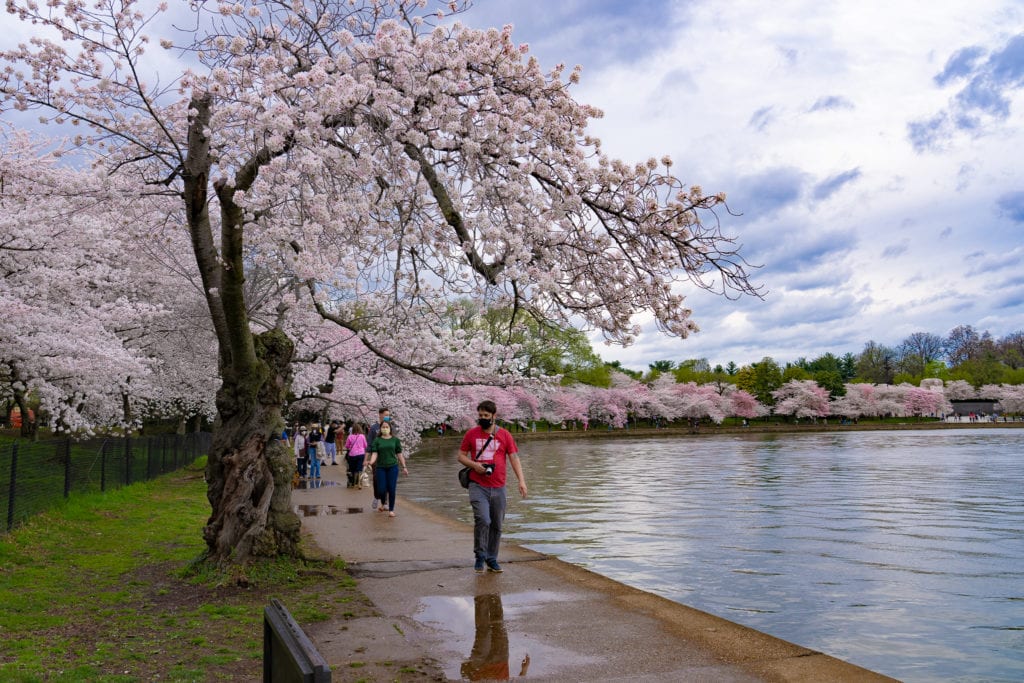
Due to a stretch of unseasonably warm temperatures, the cherry blossoms along the Tidal Basin have achieved peak bloom several days earlier than expected. The blooming of the cherry trees, gifted by Japan in 1912, has long come to symbolize the natural beauty of our nation’s capital and the beginning of spring.
The peak-bloom period is usually defined as the day when 70 percent of the blossoms are open. It typically lasts about 7 to 10 days, but may have been threatened by last night’s storms, which saw winds reaching 50 miles an hour. It is believed most of the petals should survive this storm, as it is still early in the season, when the petals are at their strongest.
Annual activities connected with the National Cherry Blossom Festival have been substantially curtailed this year in favor of “virtual” events. The crowd on Sunday, March 28, was much lighter than would be typical for a “peak” weekend, due in large part to the COVID emergency and threats by the National Park Service to limit pedestrian traffic along the Tidal Basin. But, thus far, restrictions have apparently not been needed.
Signs were strategically placed around the area requiring visitors to wear face masks. By an informal survey, it appeared that well over 90 percent of Tidal Basin visitors wore face coverings (this was in very sharp contrast to a year ago). Notably missing were the performance stages, information booths and open concession stands.
View Jeff Malet’s photos of the cherry blossoms along the Tidal Basin and the saucer magnolias at the Enid Haupt Garden (behind the Smithsonian Castle) by clicking on the photo icons below. The magnolia trees typically bloom a few weeks before the cherry blossoms.
- “Peak” is achieved when over 70 percent of the cherry trees along the Tidal Basin reach full bloom. Photo by Jeff Malet.
- “Peak” is achieved when over 70% of the cherry trees along the tidal basin reach full bloom. (photo by Jeff Malet)
- “Peak” is achieved when over 70% of the cherry trees along the tidal basin reach full bloom. (photo by Jeff Malet)
- “Peak” is achieved when over 70% of the cherry trees along the tidal basin reach full bloom. (photo by Jeff Malet)
- Steve and Everett (age 5) of Arlington Va. wear facemasks in complience with Park Service requirements. (photo by Jeff Malet)
- The Martin Luther King Memorial receives visitors. (photo by Jeff Malet)
- Families relax at the Franklin Delano Roosevvelt Memorial along the Tidal Basin. (photo by Jeff Malet)
- Crowds were well below prior years due in large part to the year old pandemic. (photo by Jeff Malet)
- Saucer magnolias at the Smithsonian Arts and Industries Building (photo by Jeff Malet)
- Saucer magnolias at the Enid Haupt Garden behind the Smithsonian Castle along the National Mall. (photo by Jeff Malet)
- Saucer magnolias at the Enid Haupt Garden behind the Smithsonian Castle along the National Mall. (photo by Jeff Malet)
- Ava Rose, age 2, sits among fallen magnilia tree blossoms. (photo by Jeff Malet)
- The Floral Library near the Tidal Basin showcasing a wide range of tulips & annuals grouped by variety. (photo by Jeff Malet)
- The Floral Library near the Tidal Basin showcasing a wide range of tulips & annuals grouped by variety. (photo by Jeff Malet)
- Washington Monument. (photo by Jeff Malet)


